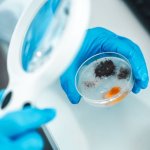
News • Diagnostics
Fast candida detection through sugar pattern analysis
Scientists created precise replicas of Candida sugar coats to understand immune responses, enabling fast bedside testing that could replace slow lab cultures.

Scientists created precise replicas of Candida sugar coats to understand immune responses, enabling fast bedside testing that could replace slow lab cultures.

Type 2 diabetes greatly increases the risk of heart attacks, strokes, anginas, and other coronary heart diseases. Therefore, biomarkers to predict individual risk are needed, experts say.

Tumor vesicles may serve as early indicators of cancer and help monitor the effectiveness of treatments. Now, researchers discovered a new way to detect these vesicles.

An implantable device could save diabetes patients from life-threatening hypoglycemia. Remaining under the skin, it can be triggered to release glucagon when blood sugar levels get too low.

Leveraging bioink from pancreatic tissue and 3D bioprinting, researchers developed a structure closely mimicking the structure of a pancreas, in which cultured cells can resume insulin production.

World TB Day raises awareness about tuberculosis and commemorates the discovery of the source bacterium M. tuberculosis. More than a century later, scientists still refine anti-TB strategies.

Periods of hypoglycemia in diabetes patients can cause impaired judgment and lead to traffic accidents. A new study shows that continuous glucose monitoring (CGM) devices can help mitigate this risk.
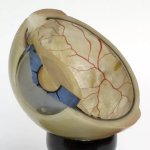
A new AI-based approach can predict whether people with type 2 diabetes are likely to develop chronic kidney disease years before symptoms arise, allowing for earlier intervention and treatment.

Microbiologists have just shown that people with diabetes are more likely to develop antibiotic-resistant strains of Staphylococcus aureus, a leading cause of AMR-associated infections and deaths.

More than half of pregnant women in the UK with gestational diabetes are unaware of their condition due to insufficient diagnostics, a study suggests. This could lead to unneccessary complications.
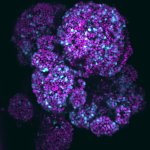
A new type of pancreas organoid contains all key pancreatic cell types - acinar, ductal, and endocrine cells - allowing valuable new insights.
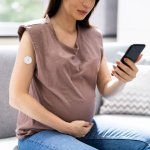
Women with type 1 or type 2 diabetes often have difficulty getting pregnant, due to complications from the disease, being obese or seriously underweight, or having conditions like polycystic ovary syndrome. Once pregnant, they face challenges of having a safe pregnancy and delivering a healthy baby. Recent advances in diabetes technology, including continuous glucose monitoring (CGM) and most…
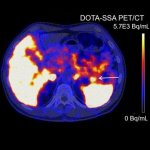
Insulinomas are benign tumors in the pancreas, but can still cause problems for patients. A new imaging technique reliably detects these previously hard-to-find tumors, according to recent research.
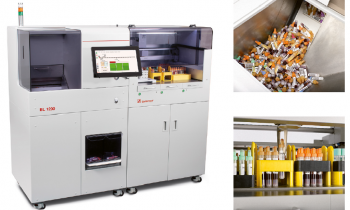
Highlights:Ideal in combination with any analytical platformSample throughput up to 1,200 tubes / hProcess any tube type of 80 to 110 mm length (with cap) and 11 to 16 mm diameter, including false bottom optionsSuited for any sample type (serum/plasma, serum gel/plasma gel, EDTA, citrate, blood sugar, urine)Intelligent re-routing when waiting for lab orderAutomatic sample accessioningCustomised…

A new method could lead to a significantly more precise and reliable diagnosis of pancreatic cancer. It is based on the selective detection of specific antibodies in blood samples.
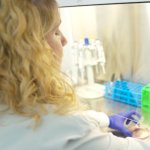
Using vascular organoids derived from stem cells, researchers gain new insights into how diabetes damages blood vessels. This could lead to to the development of new treatments.
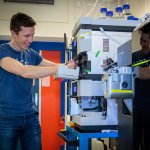
New research challenges assumptions about the origin of rheumatoid arthritis, which are probably too simple. The findings may point towards improved diagnostics of this painful autoimmune disease.
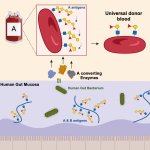
Donor blood is a scarce and valuable resource. Researchers aim to mitigrate this by using enzymes to remove specific sugars that make up the A and B antigens in the human ABO blood groups.
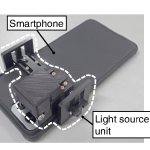
New research could revolutionize noninvasive monitoring of blood glucose levels (BGLs): a Japanese team developed a novel methodology to estimate BGLs from near-infrared light (NIR) measurements.

Researchers have found a surprising method to reduce blood glucose levels in a person: Shining red light on their back. This could help control diabetes without medication.

A nationwide programme to reduce the risk of developing diabetes in the United Kingdom is proven beyond reasonable doubt to work, a new study reveals.

University of Basel scientists have discovered that high levels of the amino acid arginine drive metabolic reprogramming to promote tumor growth. This could lead to improved liver cancer treatment.
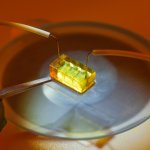
A European team of researchers have successfully developed a new, living organ model which could advance rapid testing of new or common drugs to treat diseases of the liver.
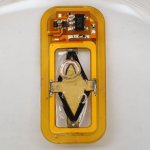
Engineers from MIT are developing a device containing insulin-producing cells and a tiny oxygen-producing factory to keep the cells of diabetes patients healthy.
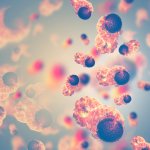
Cancer has become strikingly more common in people under 50 in the past three decades, an international research team finds. The reseachers explore what this means for future death tolls.

A new AI model finds that x-ray images collected during routine medical care can provide warning signs for diabetes, even in patients who don’t meet the guidelines for elevated risk.

German researchers have now investigated whether there is a temporal association between infection with the Sars-CoV-2 virus and the development of type 1 diabetes.
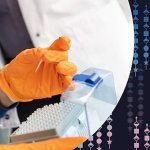
An international study shows that a new method can easily find multiple types of newly formed cancers at the same time – including cancer types that are difficult to detect with comparable methods.
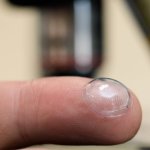
A pioneering ‘smart contact lens’ to test the eye in a quick, non-invasive way could prevent deaths caused by fungal eye infections in developing countries.

A device using next-gen technology to automatically deliver insulin was found to be more effective at maintaining blood glucose levels than standard-of-care management for type 1 diabetes.
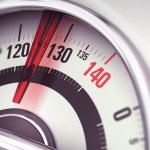
Overweight increases the risk of an imbalance in sugar metabolism and even diabetes – but the opposite is also true: insulin production deficits contribute to overweight, a new study shows.
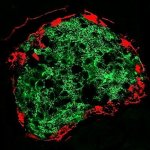
A team from Geneva has discovered a molecule that can identify the development of diabetes before the first symptoms appear.
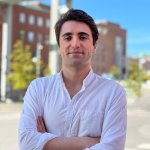
Individuals with diabetes display a substantially increased risk of disease in left-sided heart valves compared to controls without diabetes, a new comprehensive register study shows.

This overview introduces connected and continuous glucose sensing technologies, smart insulin delivery systems and more innovations that help patients and doctors monitor and manage glucose levels and guide decision-making in diabetes care.

Engineers have developed a prototype of a wearable that can continuously monitor several health stats—glucose, alcohol, and lactate levels—simultaneously in real-time.

Scientists have taken the first step to creating the next generation of wearable health monitors, which could monitor the body’s health by detecting the gases released from a person’s skin.

An international research team has now found an approach to lower the activation of hepatic stellate cells (HSCs) and reduce the associated development of liver fibrosis.
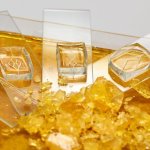
3D-printed sugar models of dense and chaotic blood vessel networks near tumors could help future cancer treatments.
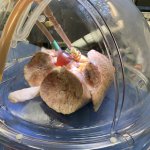
A new study has proved that it is possible to convert blood type safely in donor organs intended for transplantation. This is an important step towards creating universal type O organs.
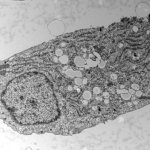
Scientists have found that fat can help the pancreas adapt to excess sugar, thereby slowing the onset of diabetes.

Beige is considered a calming paint color, and scientists have new evidence that beige fat has a similar impact on the brain, bringing down the inflammation associated with the more common white fat and providing protection from dementia. They have found that beige fat cells, which are typically intermingled with white fat cells in the subcutaneous fat present on “pear shaped” people, mediate…

Researchers have found a way to reduce organ rejection following a transplant by using a special polymer to coat blood vessels on the organ to be transplanted. The polymer, developed by Prof. Dr. Jayachandran Kizhakkedathu and his team at the Centre for Blood Research and Life Sciences Institute at the University of British Columbia, substantially diminished rejection of transplants in mice when…

Nanocontainers can transport substances into cells where they can then take effect. This is the method used in, for example, the mRNA vaccines currently being employed against Covid-19 as well as certain cancer drugs. In research, similar transporters can also be used to deliver labelled substances into cells in order to study basic cellular functions. To take advantage of their full potential,…

Using lab-created tissue to heal or replace damaged organs is one of the great visions for the future of medicine. Synthetic materials could be suitable as scaffolding for tissue because, unlike natural tissues, they remain stable in the organism long enough for the body to form new natural structures. A fundamental requirement for functional tissue is that blood vessels must be able to grow in…

Researchers have shown that the life expectancy of mices can be increased by an average of 30% in both males and females. For humans, that would means that a 90-year-old could live until nearly 120.
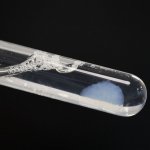
First you see it as a transparent shape on a computer screen – a small electronic replica of the human pancreas. Then just 30 seconds later the tissue is printed out on a bioprinter, blood vessels and all, from a sample of human stem cells. This amazing feat is possible thanks to new technology created at EPFL’s Laboratory of Applied Photonics Devices (LAPD) and further developed by…
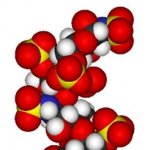
Using a nanopore, researchers have demonstrated the potential to reduce the time required for sequencing a glycosaminoglycan — a class of long chain-linked sugar molecules as important to our biology as DNA — from years to minutes. Research to be published this week in the Proceedings of the National Academies of Sciences shows that machine-learning and image recognition software could be…

Our brains are non-stop consumers. A labyrinth of blood vessels, stacked end-to-end comparable in length to the distance from San Diego to Berkeley, ensures a continuous flow of oxygen and sugar to keep our brains functioning at peak levels. But how does this intricate system ensure that more active parts of the brain receive enough nourishment versus less demanding areas? That’s a century-old…

Plasma glucose levels are essential for the evaluation of diabetes mellitus as well as gestational diabetes. Diabetes mellitus is one of the most common metabolic disorders in the world. The breakdown of glucose (glycolysis) in venous blood samples is of great significance in pre-analytics, particularly in relation to the diagnosis of diabetes mellitus and gestational diabetes.
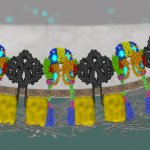
Researchers from Helmholtz Zentrum Muenchen, the Technical University of Munich and the German Center for Diabetes have discovered a novel and druggable insulin inhibitory receptor, named inceptor. The blocking of inceptor function leads to an increased sensitisation of the insulin signaling pathway in pancreatic beta cells. This might allow protection and regeneration of beta cells for diabetes…

For several years, scientists worldwide have been investigating the extent to which microorganisms living in and on the human body influence central life processes and thus health and disease. Today they assume that there is a connection between the totality of the microbial colonization in the human body, called the microbiome, and the development of diseases. Chronic inflammatory bowel disease…

For the first time, scientists have come up with a precise atomic level explanation for why glulisine - a commonly used medication to treat diabetes - is faster acting than insulin. The findings, published in Scientific Reports, could have benefits for diabetes patients in ensuring that a more improved insulin can be developed for future treatment. The study was carried out by experts from the…
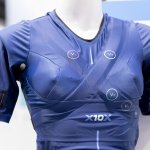
MEDICA in Düsseldorf is a world-leading platform for the medical technology business and the healthcare industry and has always been one of the places to be for the entire sector as it covers current digital health trends, innovative products and services for linking all of the major stakeholders in medical care. Consequently, digital health is a mainstay of virtual.MEDICA, which, due to the…

Focused on updating healthcare through digitisation, 41 experts and around 500 delegates gathered for the 4th ‘Digital Health Conference’ late in 2019. At the Berlin venue, they focused on solutions such as the potential lack of skilled staff, demographic changes, urbanisation and multimorbidity.
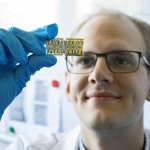
The production of highly sensitive sensors is a complex process: it requires many different steps and the almost dust-free environment of special cleanrooms. A research team from Materials Science at Kiel University (CAU) and from Biomedical Engineering at the Technical University of Moldova has now developed a procedure to produce extremely sensitive and energy-efficient sensors using 3D…

In their quest to find new and better methods to make cancer cells more susceptible to treatment, Karin Lindkvist and her research group at Lund University in Sweden are looking into the world of molecules, using the X-rays at the MAX IV laboratory. The researchers believe that limiting the cells' access to sugar will make cancer cells more sensitive to treatment. Many of the cancer treatments…

A protein newly identified as important in type 1 diabetes can delay onset of the disease in diabetic mice, providing a new target for prevention and treatment in people, according to research led by scientists at the Department of Energy’s (DOE) Pacific Northwest National Laboratory and Indiana University School of Medicine. Because type 1 diabetes is incurable and has serious lifelong health…
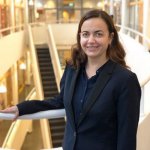
Using lipidomics, a technique that measures the composition of blood lipids at a molecular level, and machine learning, researchers at Lund University in Sweden have identified a blood lipid profile that improves the possibility to assess, several years in advance, the risk of developing type 2 diabetes. The blood lipid profile can also be linked to a certain diet and degree of physical activity.…
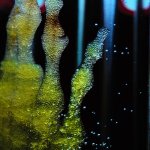
A discovery by researchers at Queen’s University Belfast and King’s College London (KCL) could revolutionise treatment for vascular and diabetes related cardiovascular diseases.

In a major medical breakthrough, Tel Aviv University researchers have "printed" the world's first 3D vascularised engineered heart using a patient's own cells and biological materials. Until now, scientists in regenerative medicine — a field positioned at the crossroads of biology and technology — have been successful in printing only simple tissues without blood vessels. "This…

UC San Francisco researchers have for the first time transformed human stem cells into mature insulin-producing cells, a major breakthrough in the effort to develop a cure for type 1 (T1) diabetes. Replacing these cells, which are lost in patients with T1 diabetes, has long been a dream of regenerative medicine, but until now scientists had not been able to figure out how to produce cells in a…

A diagnosis of prediabetes should be a warning for people to make lifestyle changes to prevent both full-blown diabetes and cardiovascular disease (CVD), according to scientists at Wake Forest School of Medicine.

New research by the University of Bristol in collaboration with Medical Detection Dogs has found that the best trained alert dogs have the potential to vastly improve the quality of life of people living with Type 1 diabetes. As reported in PLOS One, on average trained dogs alerted their owners to 83 per cent of hypoglycaemic episodes in over 4,000 hypo- and hyper-glycaemic episodes that were…

Research on a bacterial toxin first discovered in Adelaide has led to the development a new blood test for the early diagnosis of ovarian cancer - a disease which kills around 150,000 women globally each year.

Checking a lump for malignancy, finding out if food is fresh, just with your smartphone? It’s possible, according to Eindhoven University of Technology researchers in the Netherlands. Their recently presented spectrometer is small enough to insert into a smartphone. This device is not yet ready for use on a big scale, Professor Andrea Fiore, supervisor of the Eindhoven research team points out.…

Chronic stress is a well-known risk factor for the development of psychiatric illnesses including depression disorders. The brain requires a great deal of glucose, and stress is known to alter glucose metabolism. However, if stress-associated mental impairments are linked to affected glucose metabolism remains to be seen. Researchers at the Department for Psychiatry and Psychotherapy at the Mainz…

Men with diabetes are 2.4 times more likely than non-diabetics to suffer heart failure and women are five times more likely. But why? A new Loyola University Chicago Stritch School of Medicine study reveals how, on a cellular level, diabetes can cause heart failure. The findings could lead to medications to treat and perhaps prevent heart failure in diabetes patients, researchers said. In a…
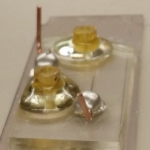
Lab-on-a-chip devices harness electrical signals to measure glucose, discern blood type and detect viruses or cancer. But biological samples need hafnium oxide for protection from electric fields.

Aging is a major risk factor for physical frailty and the development of age-related diseases such as cancer, cardiovascular diseases, type II diabetes and Alzheimer's disease. Numerous studies have already shown that a calorie-restricted diet can significantly delay age-related conditions in several organisms like flies, worms, fish and mice, and that it even improves fitness at old age. But who…

Scientists from the German Cancer Research Center (DKFZ) have been studying how the immune system succeeds in keeping pathogens in check. For the first time, the researchers have now discovered antibodies that are capable of disarming not only one specific bacterium but a whole variety of microorganisms at once. The newly discovered antibodies recognize a tiny sugar structure found on the surface…

An epidemiological study conducted by researchers at University of California San Diego School of Medicine and Seoul National University suggests that persons deficient in vitamin D may be at much greater risk of developing diabetes. The scientists studied a cohort of 903 healthy adults (mean age: 74) with no indications of either pre-diabetes or diabetes during clinic visits from 1997 to 1999,…

A completely new classification of diabetes which also predicts the risk of serious complications and provides treatment suggestions. The major difference from today’s classification is that type 2 diabetes actually consists of several subgroups, the results indicate. “This is the first step towards personalised treatment of diabetes”, says physician and diabetes expert Leif Groop.

Diabetic eye disease is the leading cause of blindness among people ages 40 to 60. The longer you have diabetes, the greater your likelihood of developing vision problems increases. Keeping blood sugar, blood pressure and cholesterol levels under control can help people with diabetes maintain good eye health. They must also have a dilated eye exam once a year, says Dr. Malav Joshi, an…

Tumor imaging technique has potential as anti-cancer weapon, mouse study shows.

A new video by the University of Warwick highlights a bitter side to our sugar consumption at Christmas. The short film highlights how excessive consumption of sugar can affect our health – and how the sugar trade in the past and today has caused inequality and bloodshed. Today Britons eat too much sugar, on average 10 per cent of our daily calories come from sugar which is equivalent to 60 g…

Managing diabetes and high blood pressure can feel like a solitary enterprise dependent on relationships with objects (like pills or foods) and activities (like brisk walks or early bedtimes) instead of relationships with people, but a group of West Virginia University researchers is hoping to change that. The National Institutes of Health has awarded $450,000 to Ranjita Misra, a professor of…

‘Visiomed, a French leader in medical grade connected devices and services that advocate patient engagement as a primary component to maintaining good health, is proud to launch VisioCheck BW-XO7HD – the first scalable and connected mobile and evolving telemedicine station that weighs under 10.5 ounces,’ the company reports.
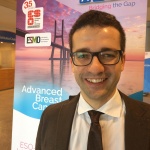
Patients with advanced breast cancer who are treated with a combination of drugs that target specific molecules important for cancer development and also the hormones that are driving it are at increased risk of suffering adverse side effects. In new research presented at the Advanced Breast Cancer Fourth International Consensus Conference (ABC 4), researchers have shown that combining targeted…
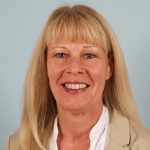
German researches have linked the increased production of a certain enzyme in the liver to fatty liver and insulin resistance.

A protein found in the edible mushroom known as "shaggy ink cap" might be able to kill a type of leukemia cell, new research suggests.

Surgeons at Johns Hopkins Medicine report that their first series of a minimally invasive procedure to treat chronic pancreas disease, known as severe pancreatitis, resulted in shorter hospital stays, less need for opioids and fewer complications, compared with standard surgical approaches.

Scientists from the German Cancer Research Center (DKFZ), in collaboration with colleagues from Heidelberg University Hospital, have been able to visualize brain cancer using a novel MRI method. They use a simple sugar solution instead of conventional contrast agents, which can have side effects in the body.

There hasn't been a gold standard for how orthopedic spine surgeons promote new bone growth in patients, but now Northwestern University scientists have designed a bioactive nanomaterial that is so good at stimulating bone regeneration it could become the method surgeons prefer.

Many diabetes patients must inject themselves with insulin, sometimes several times a day, while others take medications orally to control blood sugar. The injections, as well as the side effects from both regimens, can be painful. Now, one team reports in the Journal of the American Chemical Society progress toward an insulin-free diabetes treatment that requires fewer injections.

New research further illuminates the surprising relationship between blood sugar and brain tumors and could begin to shed light on how certain cancers develop. While many cancers are more common among those with diabetes, cancerous brain tumors called gliomas are less common among those with elevated blood sugar and diabetes, a study from The Ohio State University has found. The discovery builds…

A combination of a diabetes medication and an antihypertensive drug can effectively combat cancer cells. The team of researchers led by Prof. Michael Hall at the Biozentrum of the University of Basel has also reported that specific cancer cells respond to this combination of drugs.

ETH Researchers have used the simplest approach yet to produce artificial beta cells from human kidney cells. Like their natural model, the artificial cells act as both sugar sensors and insulin producers.

In the largest study of its kind, UT Southwestern Medical Center researchers and colleagues in Europe identified a gene variant that suppresses the desire to drink alcohol.

Researchers at Columbia University Medical Center and the Data Science Institute at Columbia University have uncovered a potentially dangerous drug interaction using data science.

A gene called ‘Wars2’ has been pinpointed as a potential new target in treating heart disease. These latest findings are the first to show that Wars2 has a star role in driving the growth of blood vessels in the heart.

In patients suffering from Type 1 diabetes, the immune system attacks the pancreas, eventually leaving patients without the ability to naturally control blood sugar. These patients must carefully monitor the amount of sugar in their blood, measuring it several times a day and then injecting themselves with insulin to keep their blood sugar levels within a healthy range. However, precise control…

Researchers have identified a mechanism that allows cancer cells to respond and grow rapidly when levels of sugar in the blood rise. This may help to explain why people who develop conditions in which they have chronically high sugar levels in their blood, such as obesity, also have an increased risk of developing certain types of cancer.

Iron nanoparticles injected before magnetic resonance imaging can make tissues more visible and the same nanoparticles may allow doctors to precisely target tumors with new medicines. However, among the challenges to the practical use of nanoparticles in the human body is what scientists refer to as lack of “hemocompatibility” – nanoparticles tend to be attacked and cleared by the immune…

A banana a day may not keep the doctor away, but a substance originally found in bananas and carefully edited by scientists could someday fight off a wide range of viruses, new research suggests. And the process used to create the virus-fighting form may help scientists develop even more drugs, by harnessing the “sugar code” that our cells use to communicate. That code gets hijacked by…

The University of Hawai'i Cancer Center discovery could warn patients years in advance allowing for a lifestyle change.

A panel of world experts in aging convened at Saint Louis University recommended that everyone 70 and older should have their memory and reasoning ability evaluated annually by a doctor or health care provider.

A gap in scientific knowledge about a family of drugs that are used to treat Type 2 diabetes has been highlighted in a new study.

Diabetes, which now affects almost 30 million Americans, can cause serious health complications, including heart disease, blindness, kidney failure and lower-extremity amputations. A lesser-known but equally grave complication is the effect of diabetes on bone health.“Clinical trials have revealed a startling elevation in fracture risk in diabetic patients,” says Liyun Wang, associate…

By providing tools to allow users to be more productive in working with healthcare big data, several Silicon Valley giants hope to increase their presence in medical services. The latest company to enter the field is Apple Computers. In March it announced the availability of ResearchKit, an open-source software framework that turns the iPhone into a research tool.

Researchers have successfully tested two new potential methods for diagnosing and monitoring diabetes in its standard and gestational forms. These findings, presented at the 2015 AACC Annual Meeting & Clinical Lab Expo in Atlanta, may lead to easier, timelier, and more affordable ways of identifying and treating this chronic disease.

Fructose not only results in a lower level of satiety, it also stimulates the reward system in the brain to a lesser degree than glucose. This may cause excessive consumption accompanied by effects that are a risk to health, report researchers from the University of Basel in a study published in the scientific journal PLOS ONE. Various diseases have been attributed to industrial fructose in…

Painful insulin injections could become a thing of the past for the millions of Americans who suffer from diabetes, thanks to a new invention from researchers at the University of North Carolina and NC State, who have created a “smart insulin patch” that can detect increases in blood sugar levels and secrete doses of insulin into the bloodstream whenever needed.

The question as to whether or not there is a point in using medical apps on private smartphones is being asked more frequently. Issues around medical diagnostics are among the key points here. We asked Prof. Dr. Dr. Norbert Gässler, Head of the Centre for Laboratory Diagnostics at the St. Bernward Hospital, Hildesheim, for competent advice. Interview: Walter Depner

Glucose testing is both a headache and an opportunity for clinical laboratories here in the United States and across the globe. It is a headache because many point-of-care and patient self-test glucose devices in wide use today lack the reliability of glucose testing performed in medical laboratories that use sophisticated diagnostic instruments.

A new extracorporeal nanotech device addresses the root cause of sepsis by removing pathogens and endotoxins simultaneously from blood even before their identification – this genetically engineered mannose-binding lectin protein can also latch on to the Ebola virus... Report: Cynthia E Keen

Barmer GEK, Germany’s second largest statutory health insurer, is covering the expense of a web-based stimulation therapy developed by Caterna Vision GmbH, a spin-off from the University of Dresden. Report: Cornelia Wels-Maug

Despite a slight drop in sales in 2013 compared to the previous year, for 2014 the German medical diagnostics manufacturers anticipate a positive business development, according to the trend indicator presented by the business association Verband der Diagnostika-Industrie (VDGH) in Berlin.

The insight that psychological, social and environmental conditions affect a person’s health is insufficiently considered in medical training and in the every-day diagnosis and treatment of patients.

Frost & Sullivan is carefully tracking the transforming global point-of-care testing (POCT) market, offering latest information on key opportunities and critical unmet needs by region

About 500,000 people in France people suffer heart failure (HF). In Europe the figure is six million and the same in the USA.

In the meantime, the Compamed Spring forum has become as much a part of the furniture as the Compamed in Düsseldorf - the leading international specialist trade fair for suppliers to the medical technology industry which has been held every year in November since 1992.

MRI has become the gold standard for many indications in cardiac imaging, apart from imaging the coronary arteries. For function and morphology assessment, MRI is the leading technology. A further advance into as yet unknown territory is myocardial imaging aided by one of the first integrated 3-Tesla PET/MR systems currently used at the Institute of Radiology, Essen University Hospital,…

Over the last few decades healthcare costs have been skyrocketing, something often discussed on this blog as it has become a considerable problem for many different countries.

Ensuring the safety of hospitalised patients is vital – and brought under a particularly strong focus in anaesthesiology. Launched in 2010, the Helsinki Declaration provided a further boost. Report: Holger Zorn

Anja Behringer reports on a neglected risk factor. With an aging population multimorbidity is increasingly a major challenge for hospital care. Diabetes is one of the medical conditions frequently encountered in multimorbid patients since cardiac and vascular diseases are often accompanied by dysfunctions of the blood sugar metabolism.

Obesity is physically debilitating – and costly for healthcare. Losing excess weight has positive effects on the entire metabolism and improves life expectancy. However, for patients who cannot lose their morbid, excess weight through diet, today’s surgical interventions can help towards permanent weight loss – and reduction in insulin dependency for diabetics.

Although the drug metformin is considered the gold standard in the management of type 2 diabetes, a study by a group of French researchers published in this week's PLoS Medicine suggests that the long-term benefits of this drug compared with the risks are not clearly established - an important finding given that currently, thousands of people around the world are regularly taking metformin to…

When the ISICEM 2012 opens this March, Brussels will again experience a healthy influx of medical specialists intent on hearing the most recent, clinically relevant developments in research, therapy and management of the critically ill.

Dysglycaemia is a new term in critical care that recognises the vital importance for glucose monitoring of patients in the intensive care unit (ICU). Beyond the clinical consensus over this word for grouping critically ill patients with hyperglycaemia, hypoglycaemia or high blood sugar, there is no broad agreement on how best to manage these patients. Report: John Brosky.

From 16 - 19 November 2011, the attention of health and medical care professionals from around the world will once again focus on Düsseldorf, as the world's largest medical trade fair, MEDICA 2011, World Forum for Medicine, and COMPAMED 2011, High tech solutions for medical technology, the leading international trade fair for the suppliers market in medical manufacturing, get underway.

High levels of chocolate consumption might be associated with a one third reduction in the risk of developing heart disease, finds a study published on bmj.com. The findings confirm results of existing studies that generally agree on a potential beneficial link between chocolate consumption and heart health. However, the authors stress that further studies are needed to test whether chocolate…
Since the German Federal Ministry of Health did not oppose the Federal Joint Committee (G-BA) decision to eliminate reimbursement for urine and blood sugar test strips for Type 2 diabetics not dependent on insulin from the services provided by statutory medical insurers, from this October test strips will only be prescribed in exceptional cases.
Research introduced at SNM’s 58th Annual Meeting may lead to much-needed cardiovascular disease screening for diabetic patients at risk of ischemic heart disease, a disorder marked by significantly reduced blood flow in the heart. Ischemia of the myocardium, or cardiac muscle, can signal diminished oxygenation of the heart tissue and trigger a heart attack if left untreated.

Morbid obesity is a chronic, lifelong, multifactorial, constitutional disease with negative medical, psychological, physical, social and economic side-effects. Obesity-related secondary diseases are Type 2 diabetes mellitus (T2DM), cardiovascular diseases such as hypertension or sleep apnoea. Report: Holger Zorn

During intensive care, hyperglycaemia and insulin resistance are widespread in diabetics as well as non-diabetics. However, whether the normalisation of blood glucose levels with insulin therapy improves the prognosis of such patients is still debated. Karoline Laarmann reports

7,000 people from 120 countries met in Stockholm this September to hear international experts discuss the progress, solutions and challenges of one of our greatest healthcare burdens. Prevention, self-monitoring, surgery, guidelines, economic problems, drug-safety, and co-morbidities – these are just a few of the problems associated with the care of about 55 million diabetics in Europe.
Does diabetes further increase the risk of death in patients diagnosed with cancer? A team at the Johns Hopkins School of Medicine in Baltimore, Maryland, has discovered something very sobering: Cancer patients are 51% to 85% more likely to die after surgical resection if they had pre-existing diabetes.

Diabetes mellitus is a lingering disease – for a long time it causes subjectively few complaints or no complaints at all. Despite this, it is life-threatening – especially if undiagnosed, or diagnosed too late. However, although diabetes is the most widespread disease it is often only discovered by accident in a hospital, where many hospital doctors feel that diabetology is the responsibility…

Around 75% of adult type 1 and type 2 diabetics say they believe they know what their blood sugar levels are, without testing, according to data presented at the American Diabetes Association 70th Scientific Sessions. These results are important to consider because self-monitoring with a blood glucose meter is essential for people with diabetes to obtain accurate blood glucose results that guide…

Since February 2008, the Federal Joint Committee (G-BA) has been trying to exclude short acting insulin analogues completely from reimbursement by the statutory medical insurers. Why? Insulin analogues are 30% more expensive than human insulin.

In June 2009, IBM introduced the industry’s first set of commercial cloud services. Based on two years of research and hundreds of client engagements, the IBM Smart Business ‘cloud’ portfolio aims to help clients turn complex business processes into simple services. How does IBM explain what cloud services are? Cloud Computing is a form of IT use where the end user can utilise…
In type 2 diabetes, which is occurring at alarming rates, the hormone insulin does not work effectively to lower blood sugars and patients also do not make enough insulin. These two processes have been widely considered as separate. However, a surprising discovery was made by Joslin Diabetes Center researchers in animal models of diabetes: insulin is important in regulating its own production.…
A study published this week in Lancet suggests that low A1C levels may be just as dangerous as high A1C levels in diabetes patients with respect to mortality and cardiovascular outcomes. Upon review of the study, The Endocrine Society released a statement recommending against any wholesale change in glycemic goals and strongly encourages patients to discuss these issues with their diabetes-care…
A telemedicine programme, run through Leicester University Hospitals since last November, allows parents and young patients with Type 1 diabetes to use their mobile phone to record blood sugar levels.

This April, scientists, physicians, nurses, diabetes organisation heads, patients and representatives from Bayer HealthCare Diabetes Care gathered in Basel, Switzerland, for the third European Media Workshop on Diabetes. The event was hosted by Bayer HealthCare Diabetes Care, which is celebrating 40 years of innovative blood glucose monitoring.
Diabetes presents a special challenge for the young. Here we see how a young Swiss girl has successfully come to terms with her metabolic disorder. A true life story from Bayer HealthCare Diabetes Care (BayNews)

It´s MEDICA time again: A top theme is the rapidly progressing networking process of the agents in the health care system thanks to new applications, in particular in the field of medical IT.

Approximately 31 million people in the European Union are suffering from diabetes, a devastating disease with severe consequences for patients and their families, but also for the society at large and the economic prosperity of Europe. This week EH Online will focus on innovative strategies in diabetes care and on new management systems to support physicians and patients alike. Moreover, we will…
Bayer HealthCare Diabetes Care unveiled the new CONTOUR® blood glucose meter with enhanced testing features at the 44th Annual Meeting of the European Association for the Study of Diabetes in Rome, Italy.

According to a study conducted by researchers at the University of Zurich and the Zurich University Hospital the answer is: Yes. They demonstrated that one injection per month sufficed to improve blood sugar levels significantly. Even more: The insulin production of the patients improved.

French findings support the notion that gastric bypass can rapidly reverse diabetes symptoms' a side-effect that lap-band surgery does not show. The benefit results from a new-found element of glucose production by the intestine which also increases insulin sensitivity and lowers blood sugar.
To reduce health costs as well as improve health, many large employers and insurers are introducing pay for the performance of patients (P4P4P).

Heidelberger-Medical-Marketing GmbH (HMM) presented the first CE-Certified and EU-Registered blood glucose meter for self-monitoring with Bluetooth technology, the smartLABgenie at Medica on Wednesday.
Born in 1891, Canadian Sir Frederick Banting was destined to become a medical scientist and Nobel Prize winner for work that led to the discovery of insulin. World Diabetes Day, held on his birthday, aims to sensitise the public - including potential patients - to this condition. Worldwide, around 245 million people suffer Diabetes mellitus. With 5.3 million of them in Germany, the country's…

Osmolality is a simple, rapid and relatively inexpensive procedure that is important in the diagnosis of many physiological conditions, because the measurement of osmolality often provides information that cannot be obtained by any other method.

Preliminary findings from the largest-ever study of treatments for diabetes provide no evidence that intensive treatment to lower blood glucose (sugar) increases risk of death.

Health Manager, a new diagnostic system for personal health monitoring, will be launched by Biocomfort at Medica in November.

Obesity is a burgeoning nightmare for everyone involved in healthcare delivery. New treatment possibilities can help to solve this probelm.


A connection has been discovered between raised levels of the liver enzyme Gamma-Glutamyl-Transferase (GGT) and the probability of death from diseases of the cardiovascular system or strokes.
Near-patient testing (NPT) is any analytical process performed for, or by, a patient outside the traditional clinical laboratory. By Manole Cojocaru MD PhD, scientific consultant at ROMAR Medical-Laboratory Colentina, Bucharest